Содержание
- 2. Dyspepsia syndrome is determined as pain or discomfort localized in the epigastric area closer to the
- 3. Patients' complaints on admission corresponding to the complex of symptoms in gastric dyspepsia: pains in the
- 4. A complex of symptoms in dyspepsia syndrome is to be distinguished from the one in gastroesophageal
- 5. Depending on the causes triggering dyspeptic disorders, there is organic and functional (non-ulcerative) dyspepsia.
- 6. Organic dyspepsia is recognized if the following markers are highlighted: esophageal disease: reflux- esophagitis gastric disease:
- 7. If to exclude the diseases mentioned after a through examination, the patients (in case the dyspeptic
- 8. Classification of functional dyspepsia. According to A. Smout et al. (1992) - according to intestinal motility:
- 9. According to N. Talley (1991), M. von Oytryve et al. (1993) - ulcerative-like variant; - refluxoid
- 10. In 20-69% of patients with ulcerative-like variant the duodeno-gastric reflux, delayed evacuation from the stomach, and
- 11. Clinical variation of non-ulcerative dyspepsia. Depending on the either symptoms predominated in the clinical presentation of
- 12. Clinical characteristics of various non-ulcerative dyspepsias Ulcerative-like type Pains localized in the epigastric area Pains subside
- 13. Dyskinetic type Early saturation Feeling of repletion in the epigastria area after the meals Nausea Upper
- 14. If the symptoms presented in patients do not correspond with the underlined variants, then the symptoms
- 15. Etiology and pathogenesis Chronic gastritis usually associated with pyloric helicobacterium (H. pylori), used to be recognized
- 16. Chronic gastritis associated with H. pylori is frequently revealed in patients with non-ulcerative dyspepsia syndrome. H.
- 17. The recent findings have also exposed the lack in distinction concerning the hydrochloric acid secretion in
- 18. Gastric and duodenal motility disorder proved to be the chief pathogenetic factors of non-ulcerative dyspepsia syndrome.
- 19. Correlation of various pathological and physiological mechanisms of functional dyspepsia with clinical symptoms.
- 20. Gastric accommodation disorder (accommodation is determined here as capability of the fundic part of the stomach
- 21. Gastric accommodation disorder (accommodation is determined here as capability of the fundic part of the stomach
- 22. If stomach evacuates the food well, the cause for the dyspeptic complaints is a heightened sensibility
- 23. Diagnosis and differential diagnosis. A complex of symptoms in non-ulcerative dyspepsia is of no specific ground,
- 24. It is essential to take into account secondary motility derangement of the upper parts of the
- 25. The syndrome of gastric dyspepsia in ulcerative disease characterizes with response on food, seasonal character of
- 26. stomach ulcer The diagnostical method of stomach ulcer is an X-ray examination. But in some cases,
- 27. Stomach cancer Stomach cancer is manifested by gastric dyspepsia, which characterizes with persistence and progression. The
- 28. chronic cholecystitis Dyspeptic complaints have a more frequent occurrence during the chronic cholecystitis development. Vomiting is
- 29. During the period of exacerbation, patients complain of nausea, bitter taste, eructation with bitter. Due to
- 30. pancreatic dyspepsia is expressed in exacerbation or severe course of the disease. It is manifested by:
- 31. Gastric dyspepsia in chronic gastritis is characterized with the dependency on diet violence. It is presented
- 32. As the disease progresses, patients with chronic gastritis have tendency to hyposecretion and reduction in acidity
- 33. Antral gastritis, gastroduodenitis may resemble ulcerative disease of the duodenum in their clinical manifestations. The disease
- 34. Gastroesophageal reflux disease is a chronic recurrence conditioned by retrograde entrance of food mass into esophagus.
- 35. Pains in the epigastrium associated or not with the food taken may occur quite often. Vomiting
- 36. Methods of differential diagnosis applied in functional dyspepsia. Esophagogastroduodenoscopy X-ray examination Ultrasonography Intragastric and intraesophageal monitoring
- 37. Clinical and biomedical blood tests, as well as ultrasound investigations of the abdomen, gastroduodenoscopy and X-ray
- 38. It is supposed to be important to take alarm symptoms or «red flags» into account while
- 39. Alarm symptoms are characterized as follows: fever anemia dysphagy leukocytosis visible admixture accelerated ESR blood in
- 40. Treatment. The treatment procedures are to be complex and include not only drug administration, but also
- 41. Antacidic and antisecretory drugs (H2-blockers and blockers of proton pump) are indicated in ulcerative-like variant of
- 42. Some patients (about 20-25%) may express positive response to anti-helicobacterial eradication therapy. The treatment may have
- 43. Eradication therapy T. Omeprasoli 20 mg 2 t. a day T. Clarithromycini 500 mg 2 t.
- 44. The basic means of patients' treatment of a developing dyskinetic variant is supposed to be prokinetic
- 45. The use of metodopramide (especially long-term one) may cause untoward and side effects in a great
- 46. European Motilium investigations in non-ulcerative dyspepsia treatment at doses of 5-20 mg 3-4 times a day
- 47. Итомед (Itomed) итоприда гидрохлорид 50 мг 3 раза в день side effects: -лейкопения, тромбоцитопения, гинекомастия, гиперпролактинемия;
- 48. Cyzapride (propulside, coordinacs) attracts much attention. This drug is quite effective in functional dyspepsia (in 60-90%>
- 50. Скачать презентацию



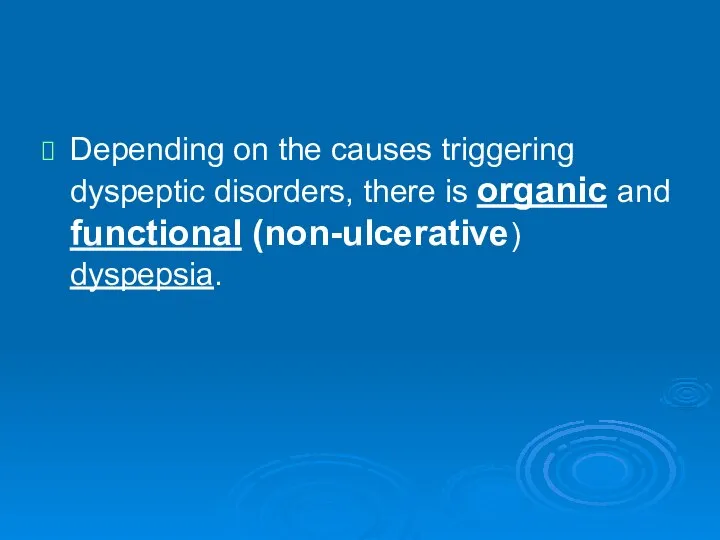
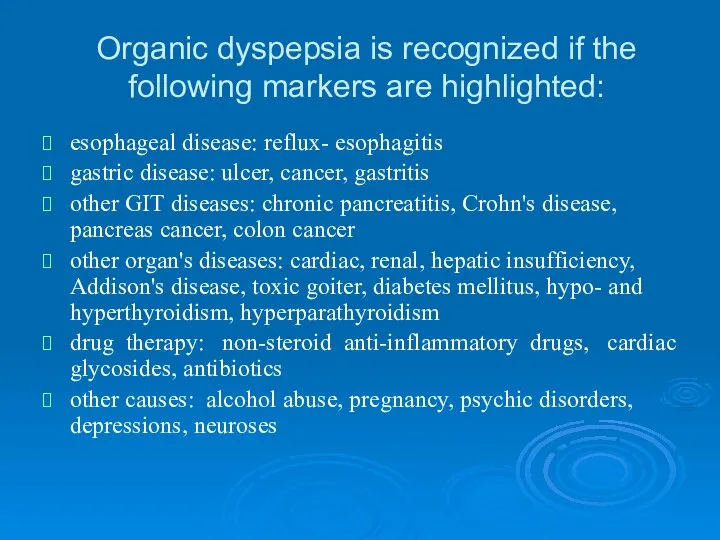
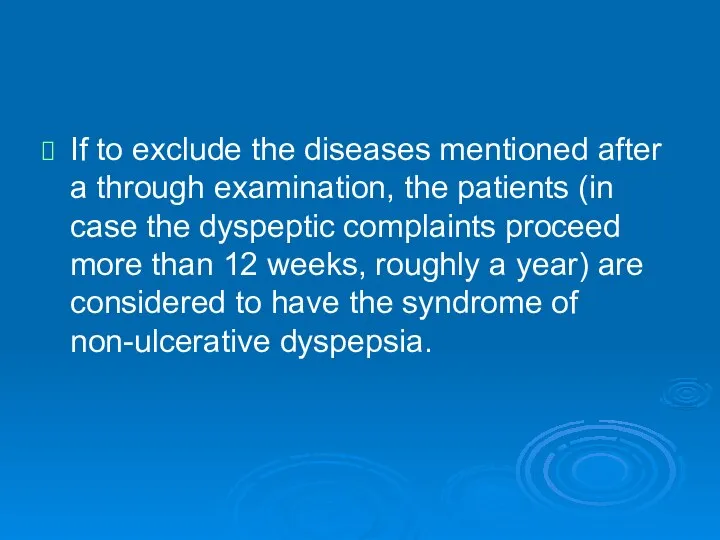
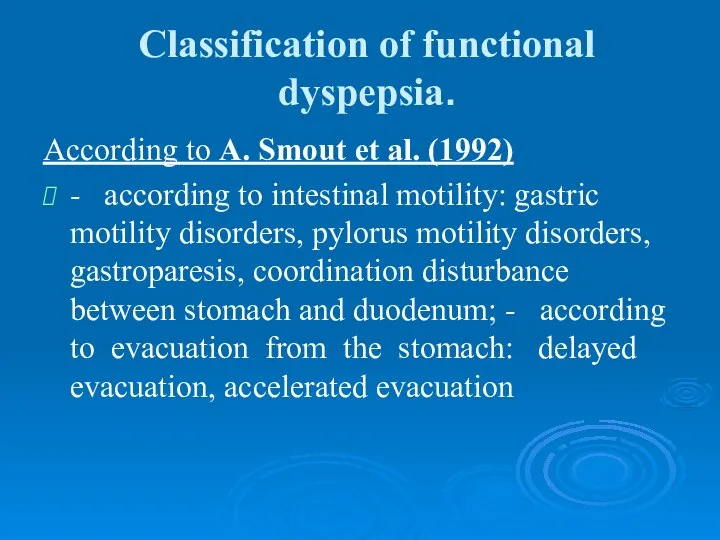
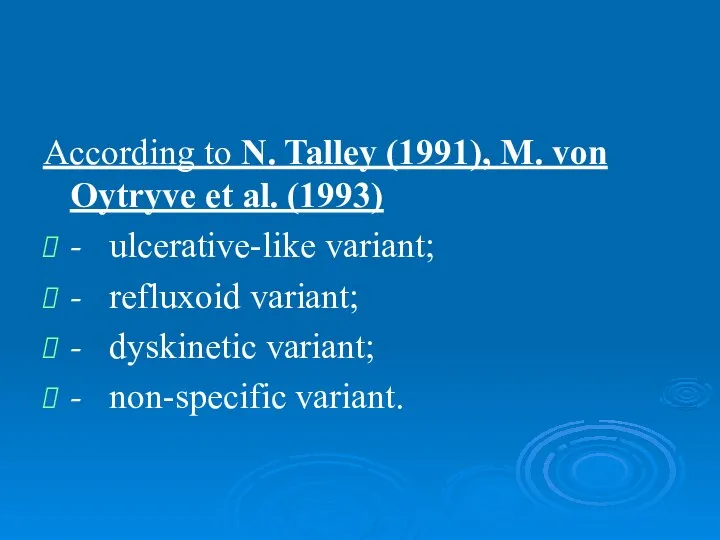
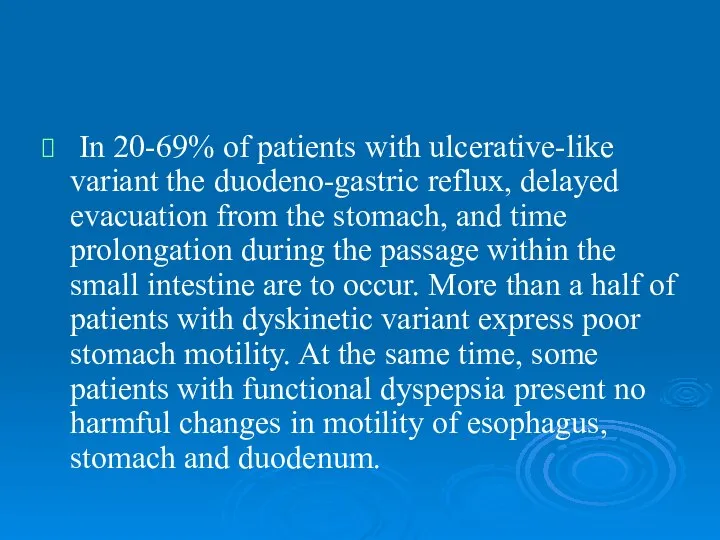
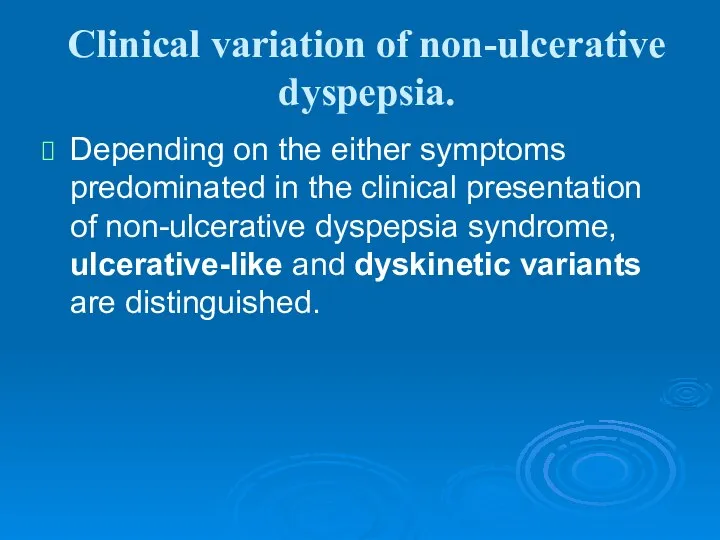
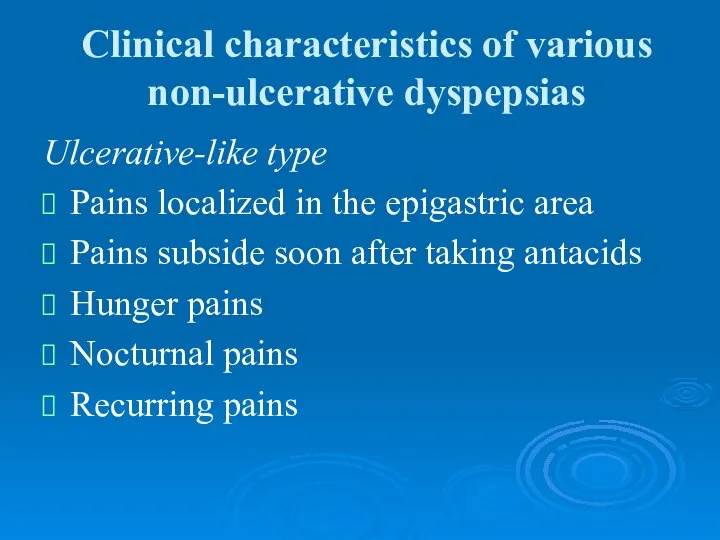
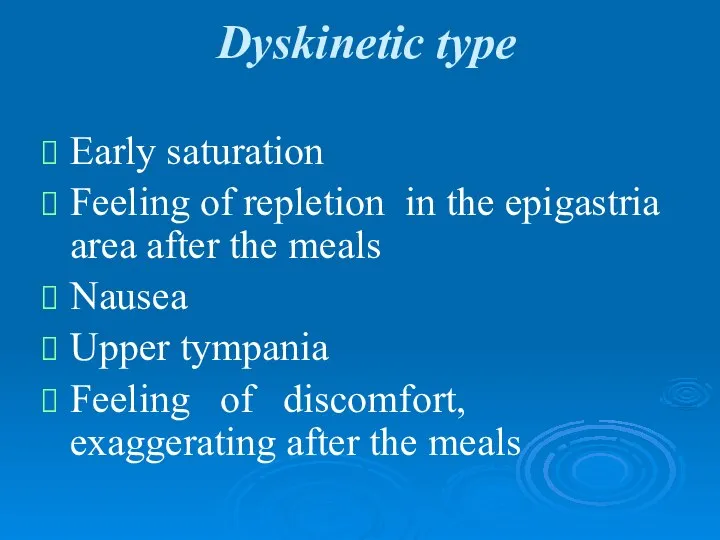
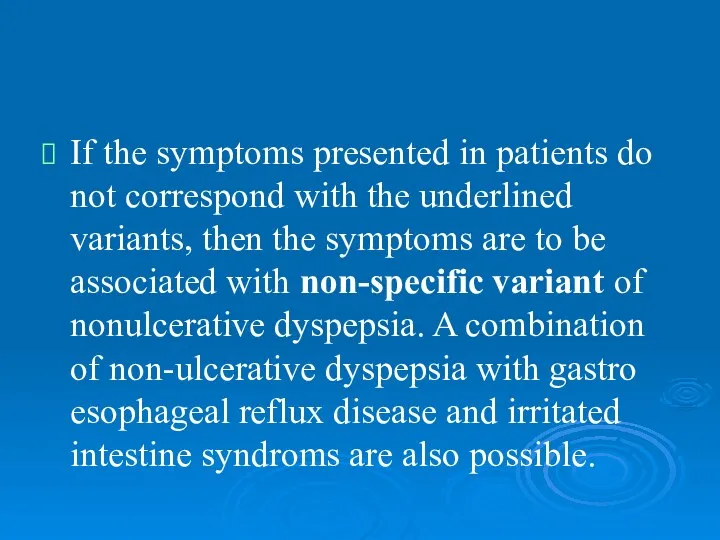
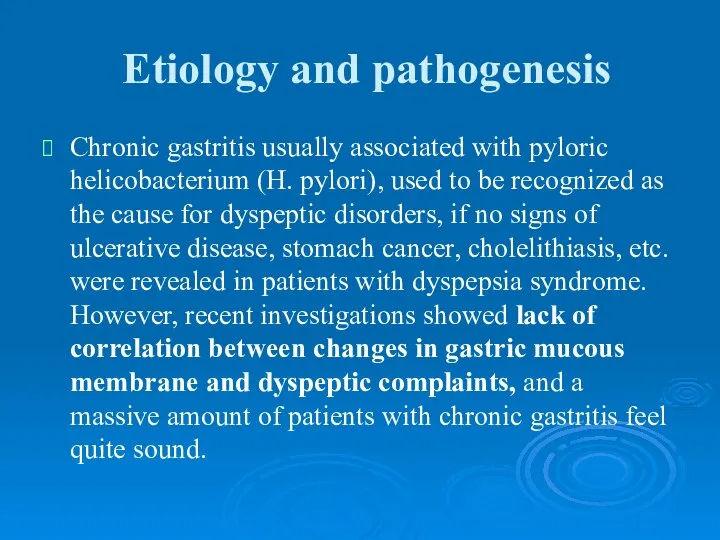
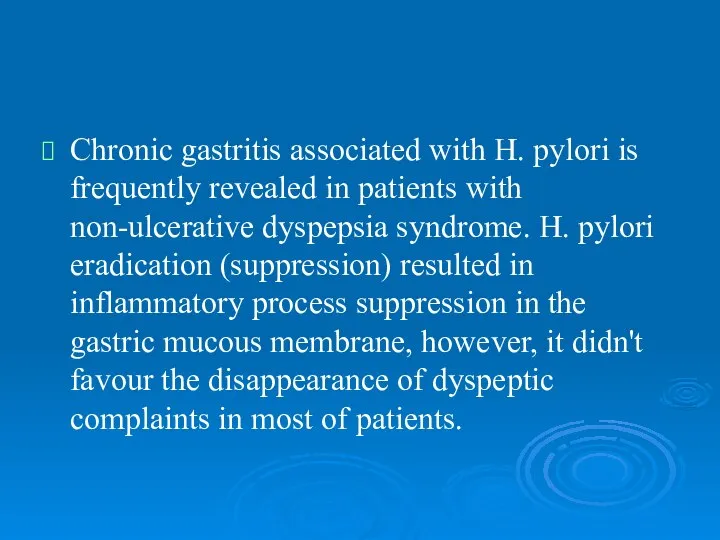
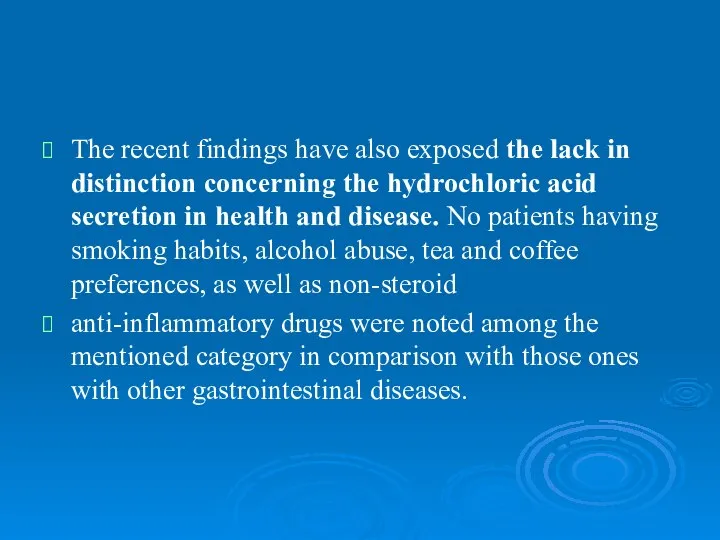
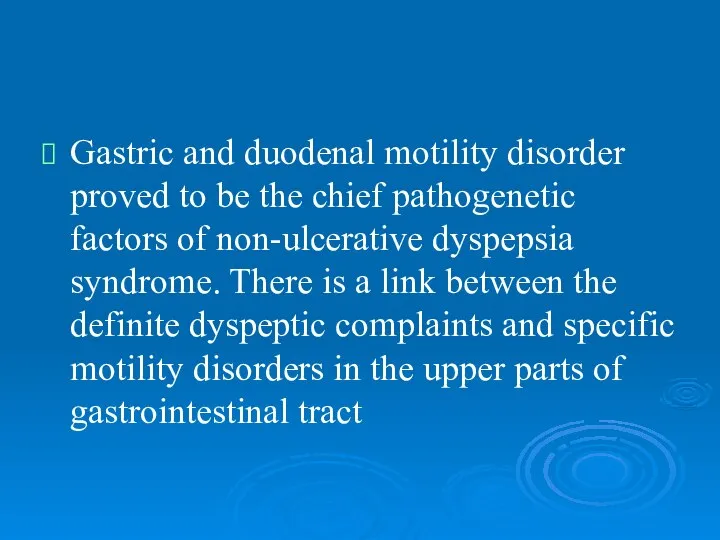
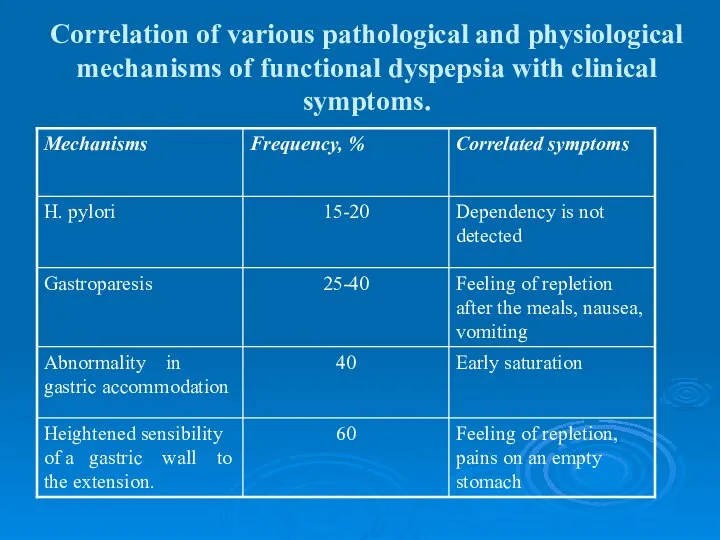
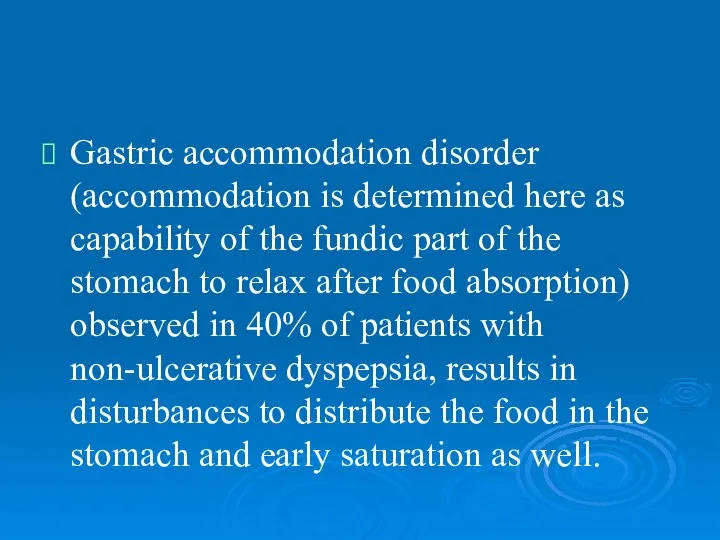
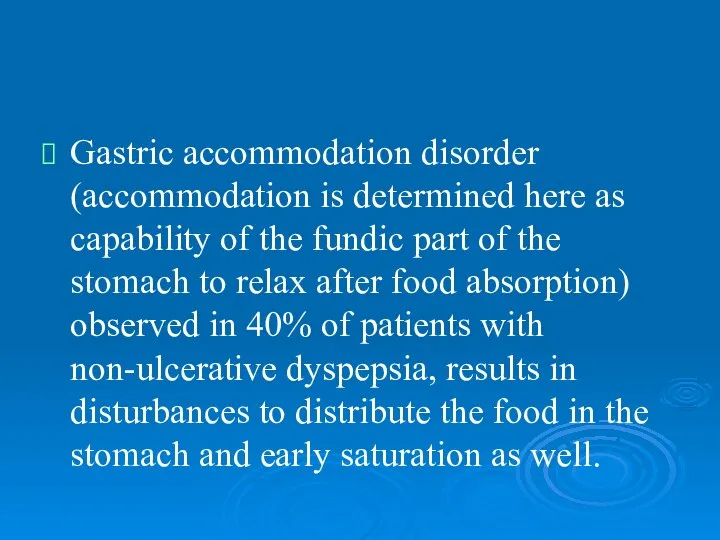
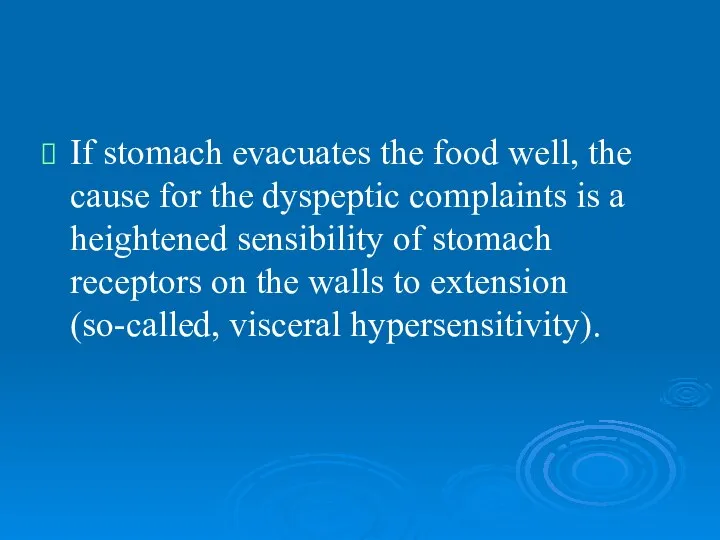
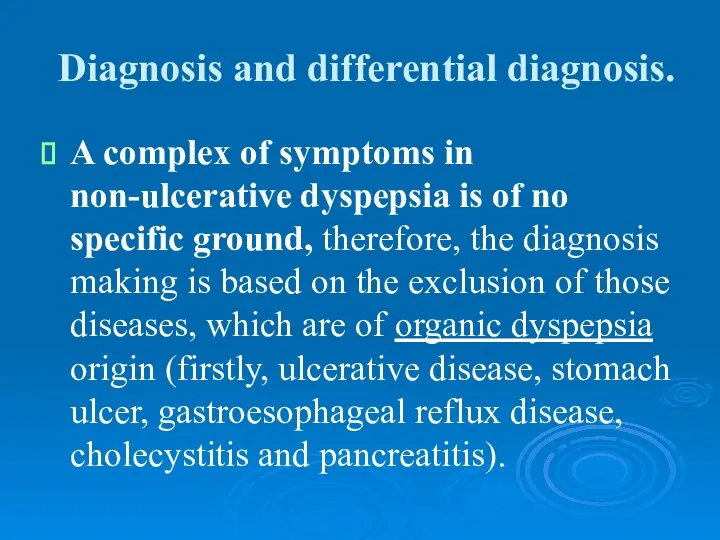
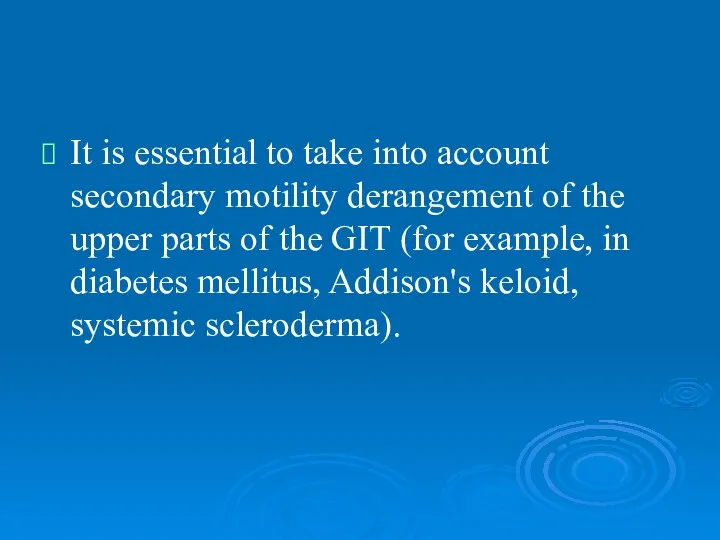
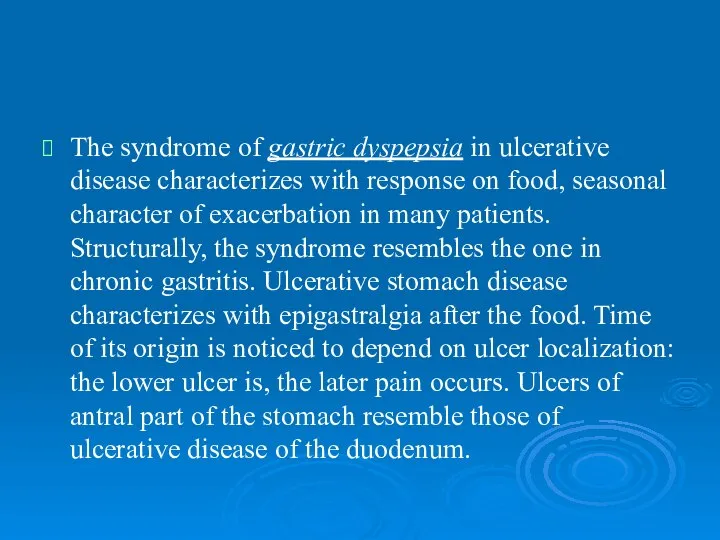
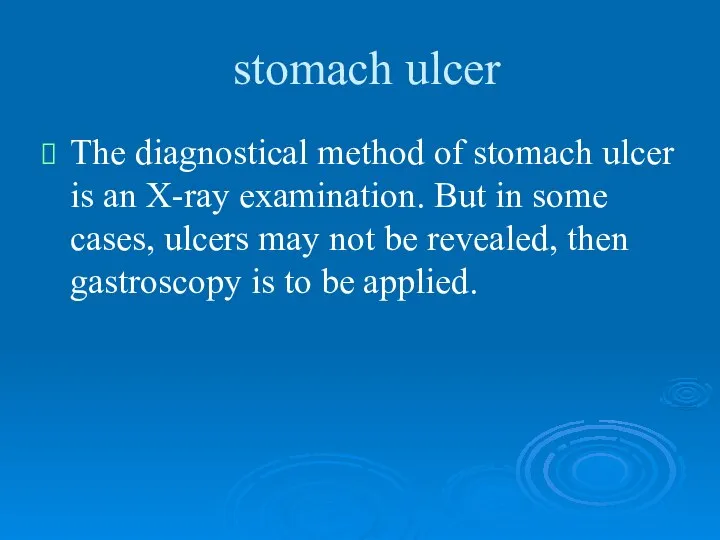
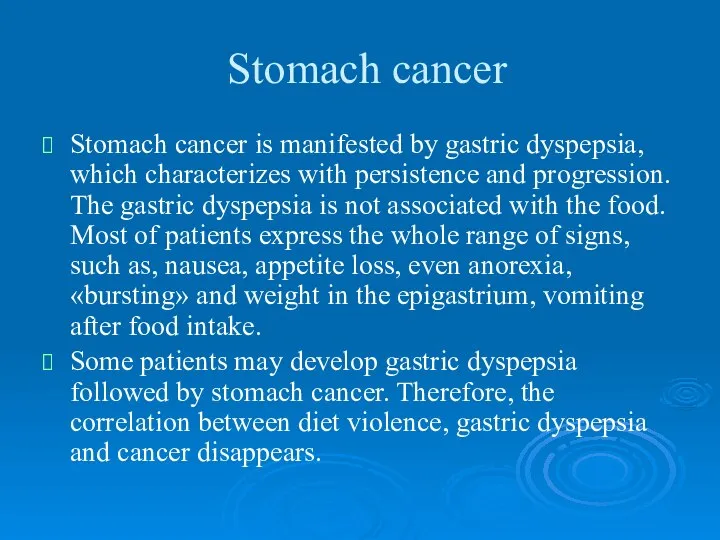
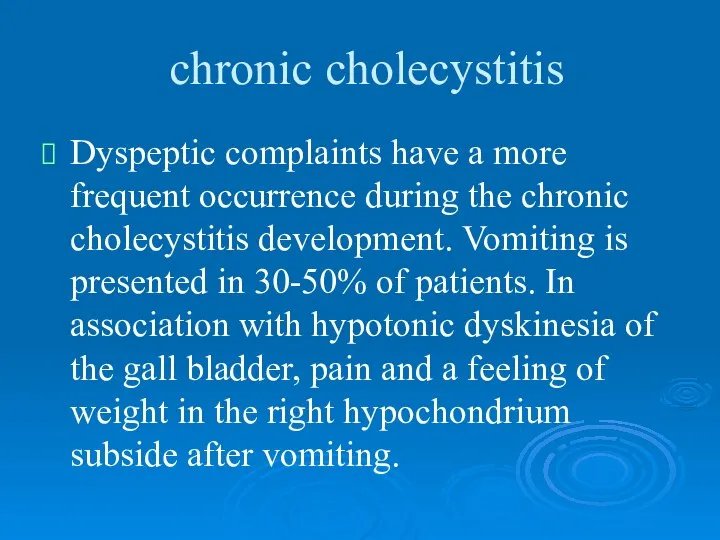
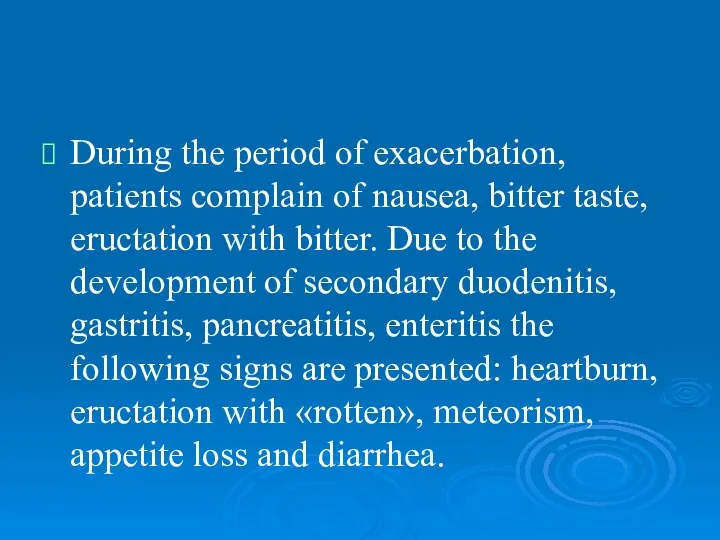
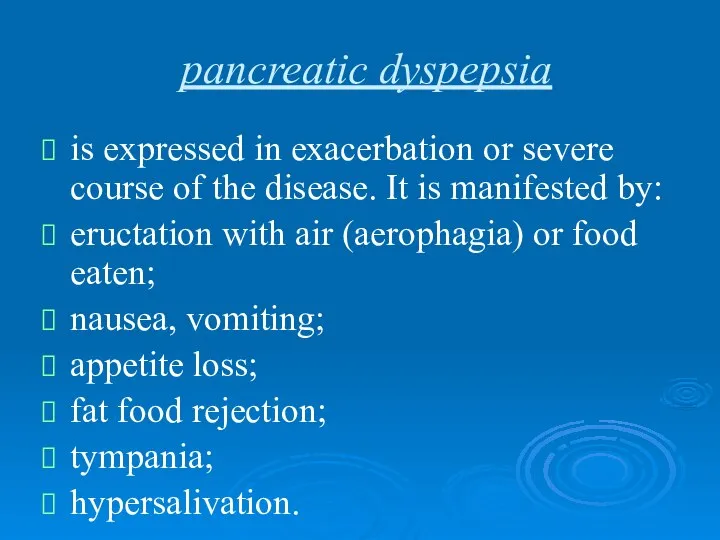
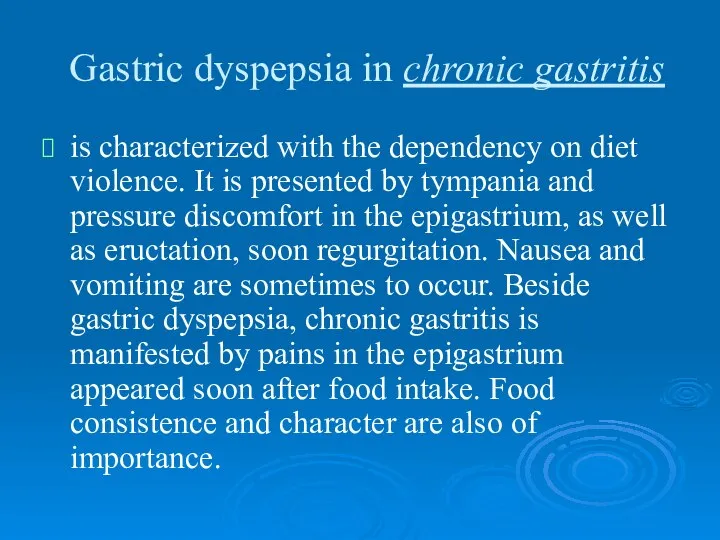
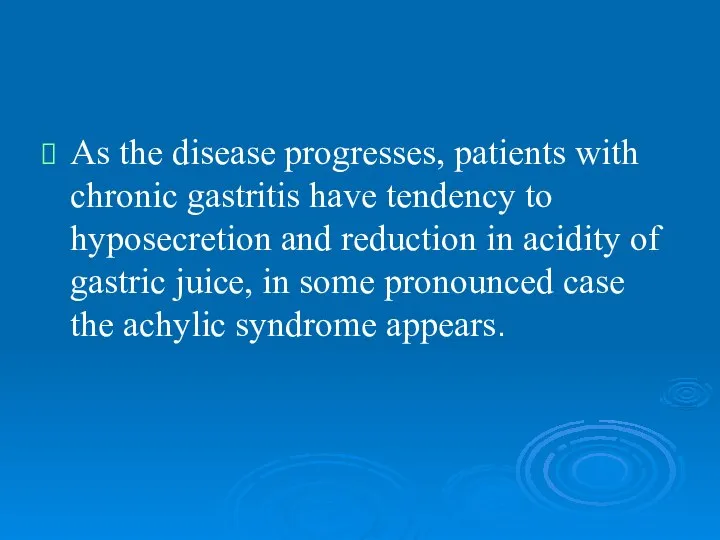
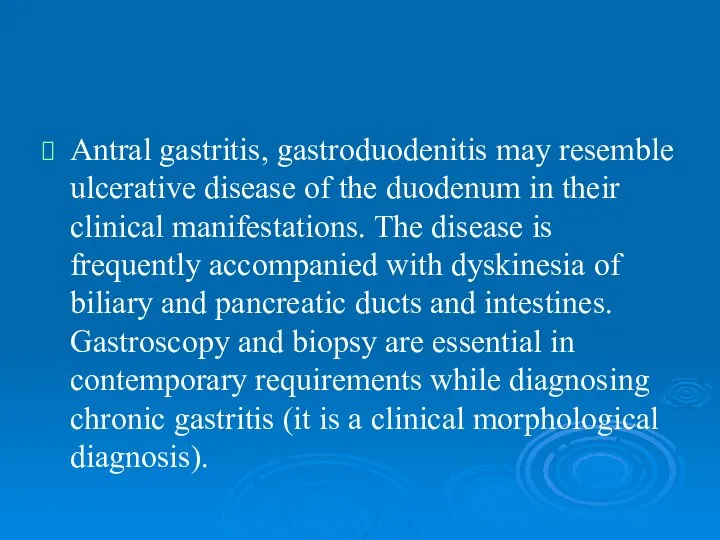
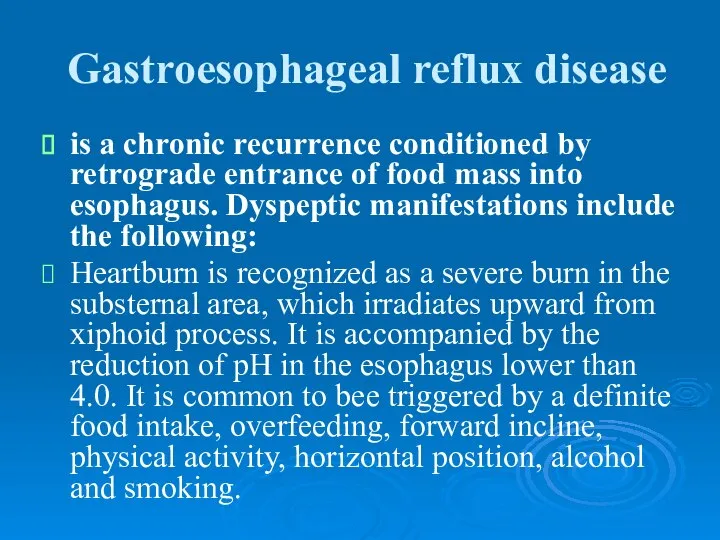
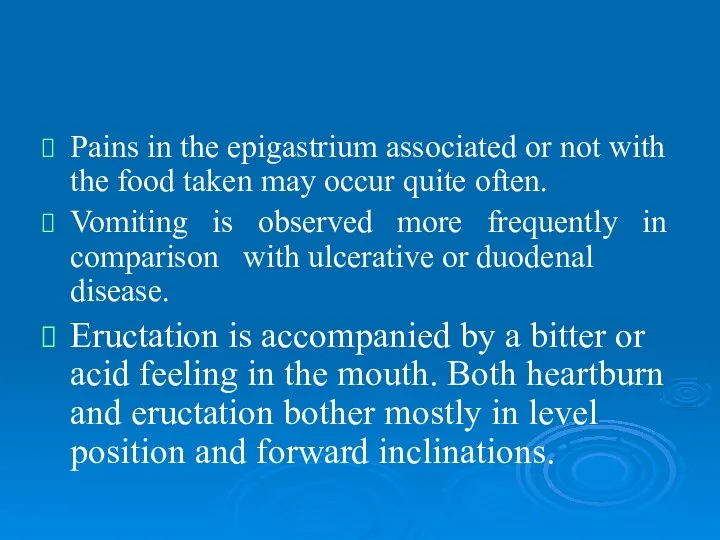
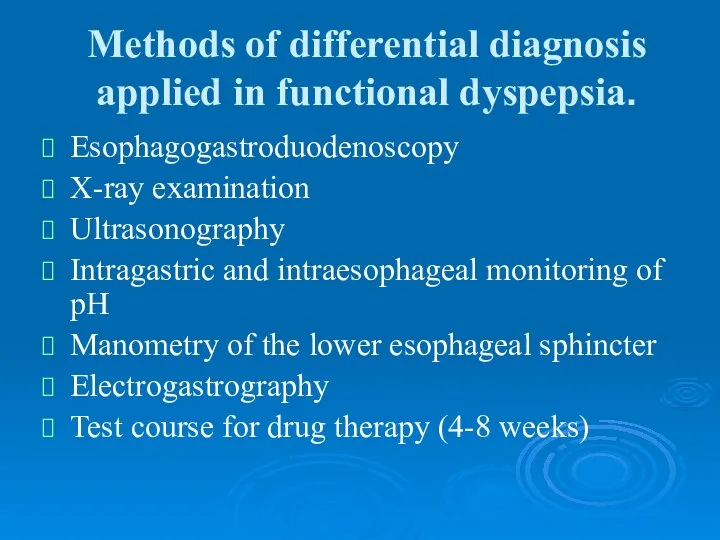
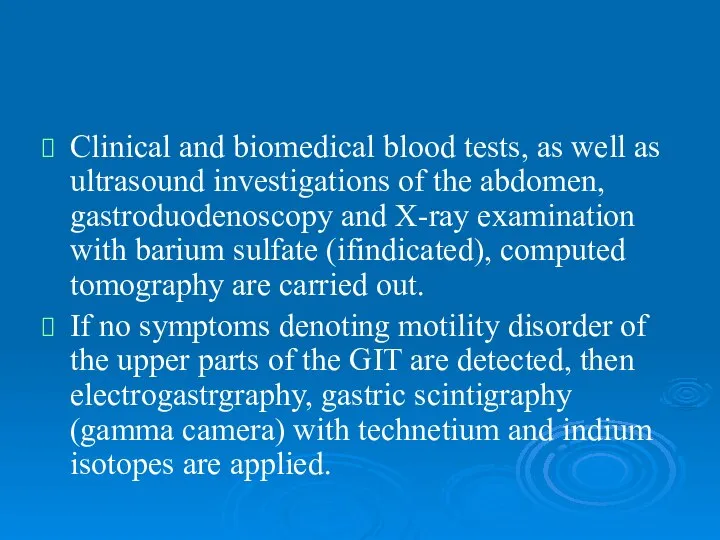
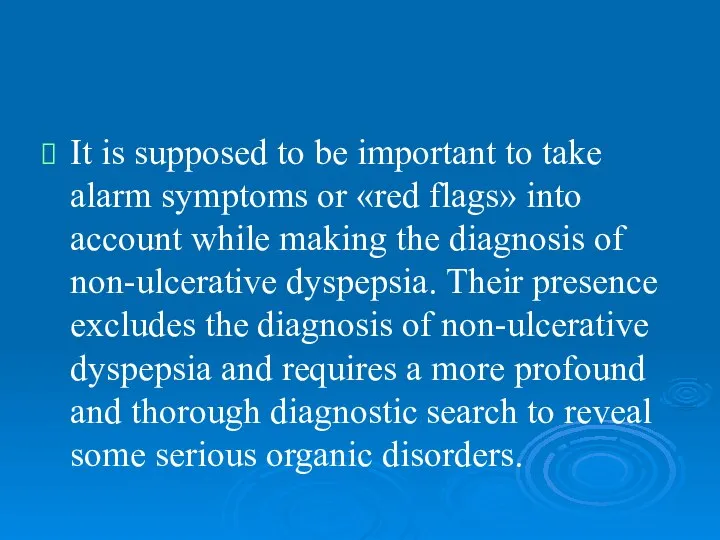
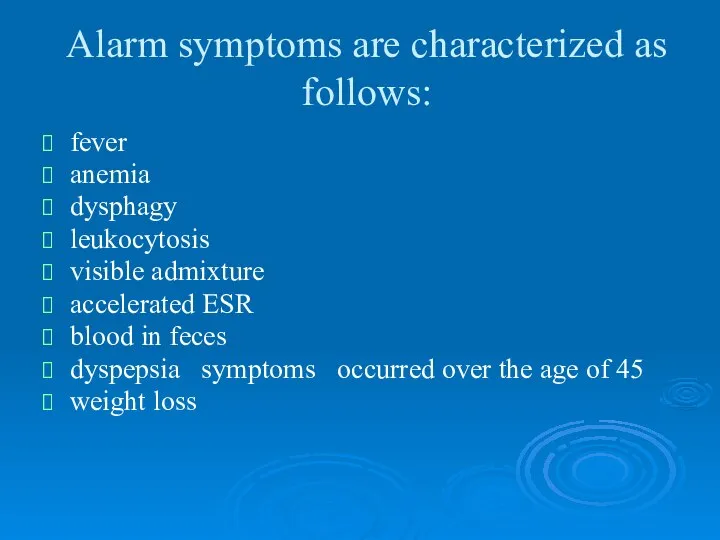
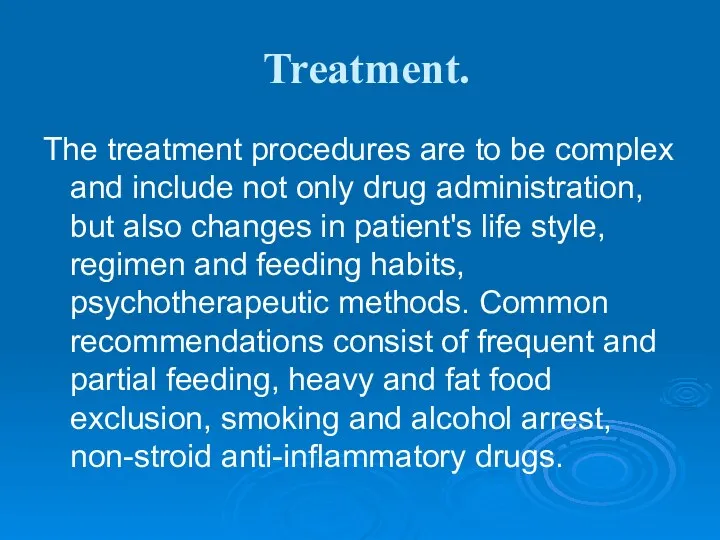
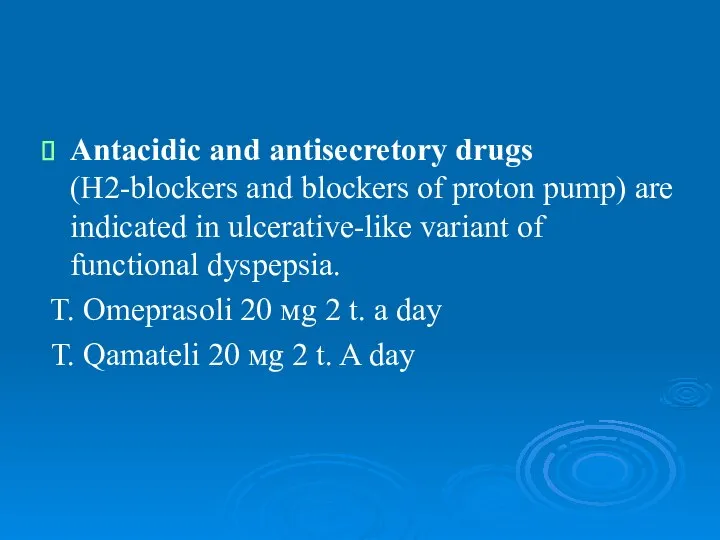
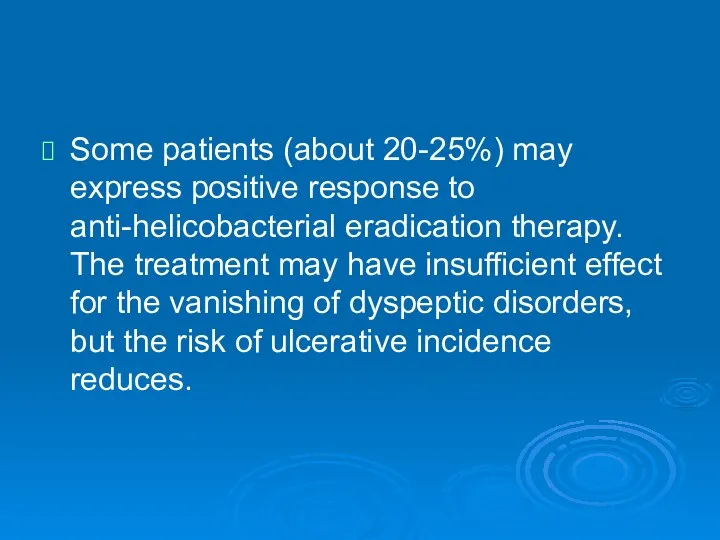
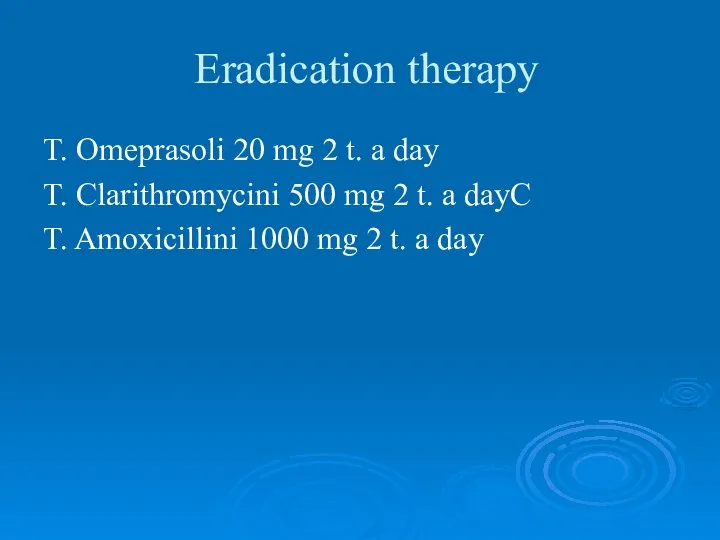
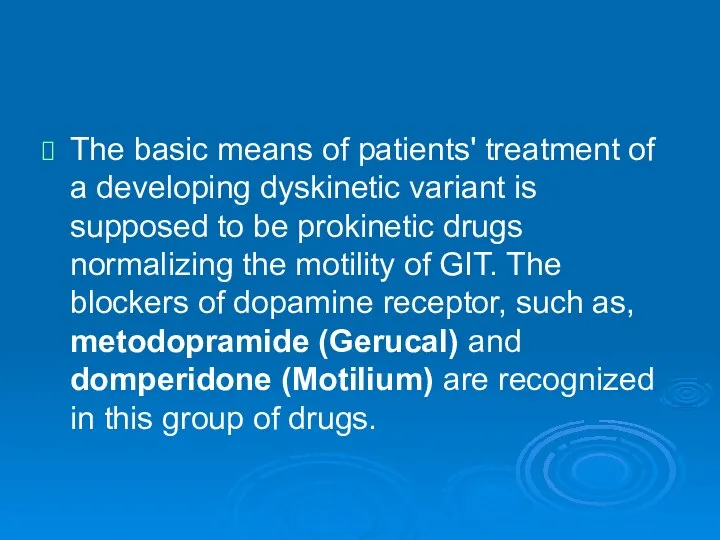
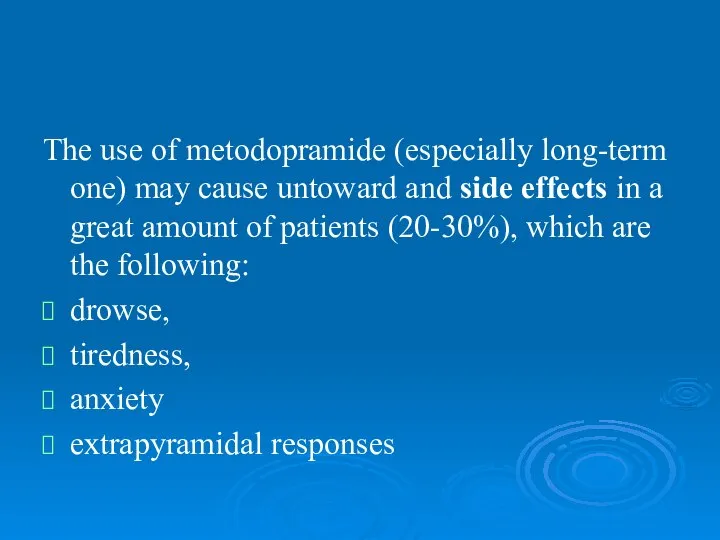
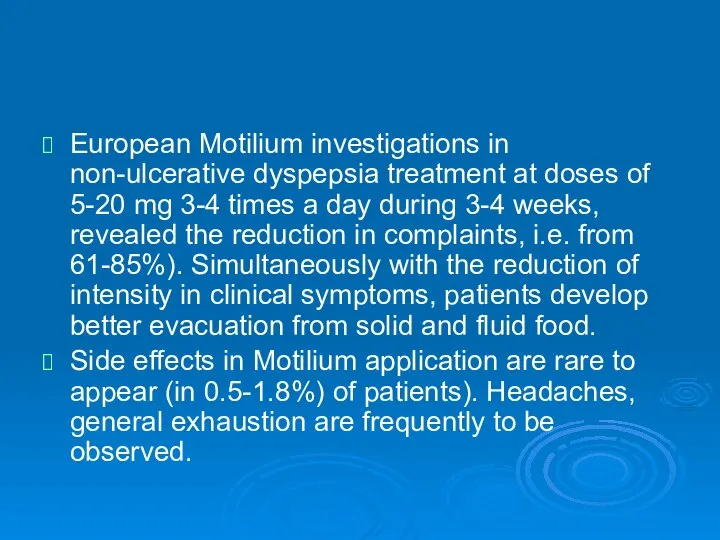
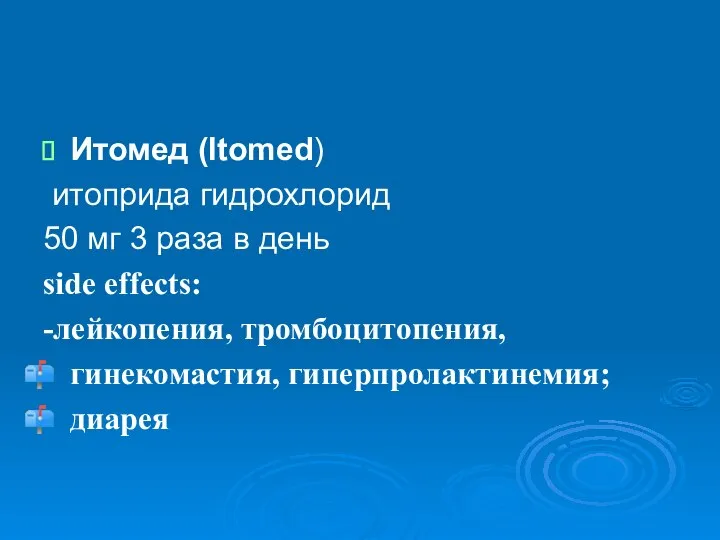
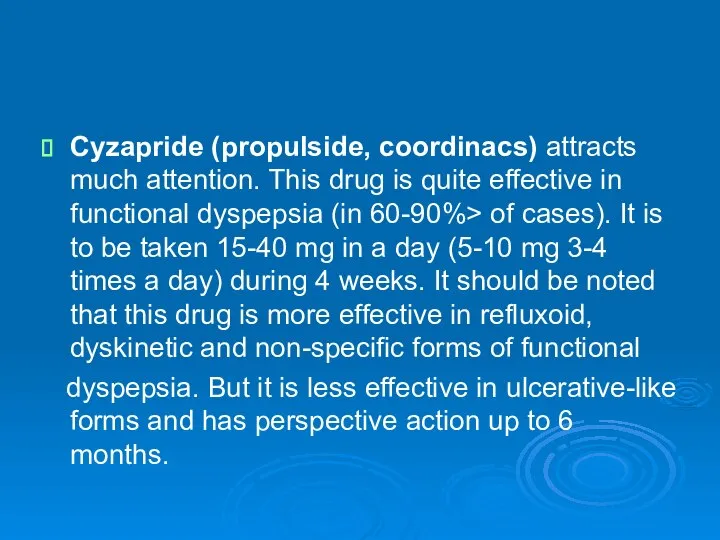
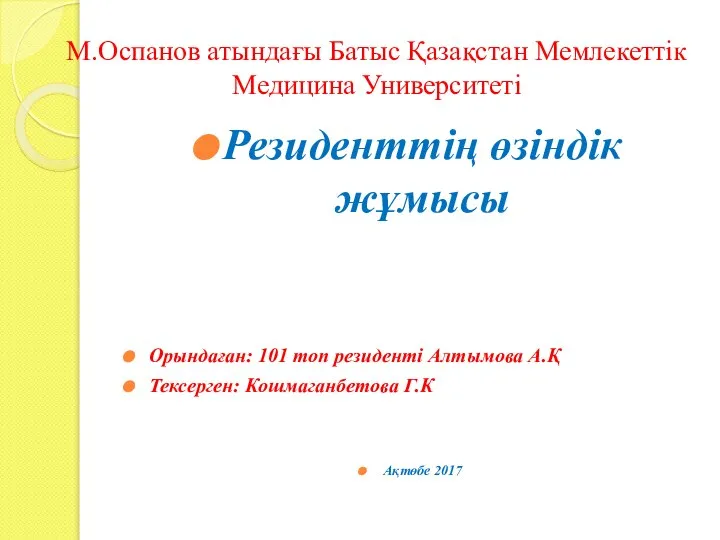 Аденомиоз және симптоматикалық миомаға тағайындалған жатыр артериясының эмболизациясынан(ЖАЭ) кейінгі
Аденомиоз және симптоматикалық миомаға тағайындалған жатыр артериясының эмболизациясынан(ЖАЭ) кейінгі Методика многостороннего исследования личности в клинической медицине и психогигиене
Методика многостороннего исследования личности в клинической медицине и психогигиене Немозол (Албендазол). Одна таблетка… Против всех
Немозол (Албендазол). Одна таблетка… Против всех Психопатологическая семиотика. Психопатологическая синдромология. Первая помощь при эпилепсии
Психопатологическая семиотика. Психопатологическая синдромология. Первая помощь при эпилепсии Заболевания Сердечно-Сосудистой Системы
Заболевания Сердечно-Сосудистой Системы Долевая пневмония
Долевая пневмония Синдром длительного сдавливания (СДС)
Синдром длительного сдавливания (СДС) Ожоги. Первая доврачебная помощь
Ожоги. Первая доврачебная помощь Пароксизмальная форма ФП: удержание синусового ритма
Пароксизмальная форма ФП: удержание синусового ритма Организация работы централизованного стерилизационного отделения
Организация работы централизованного стерилизационного отделения Микроцефалия. Признаки патологии
Микроцефалия. Признаки патологии Реабилитация больных с нарушениями эмоционально-личностной сферы
Реабилитация больных с нарушениями эмоционально-личностной сферы Учение об инфекции. Микробиология
Учение об инфекции. Микробиология Пищеварение: общие вопросы
Пищеварение: общие вопросы Методика лечения гнойных ран по Каншину
Методика лечения гнойных ран по Каншину ПЦР-диагностика в АО СЗЦДМ: спектр исследований, преаналитика, особенности выполнения
ПЦР-диагностика в АО СЗЦДМ: спектр исследований, преаналитика, особенности выполнения Физиологический и патологический гастроэзофагеальный рефлюкс и ГЭРБ в педиатрической практике
Физиологический и патологический гастроэзофагеальный рефлюкс и ГЭРБ в педиатрической практике Противомикробные, противопоказанные при беременности
Противомикробные, противопоказанные при беременности Цикл лекций
Цикл лекций Trahejas slimības
Trahejas slimības Микрофлора влагалища. Нормальная микрофлора влагалища
Микрофлора влагалища. Нормальная микрофлора влагалища бешенство
бешенство Лекарства леса
Лекарства леса Сиамские близнецы
Сиамские близнецы Действие ферментов желудочного сока на белки
Действие ферментов желудочного сока на белки Проблема зайвої ваги в контексті вікових та фізіологічних особливостей
Проблема зайвої ваги в контексті вікових та фізіологічних особливостей Krovosnabzhenie_GM
Krovosnabzhenie_GM Анаэробная инфекция
Анаэробная инфекция